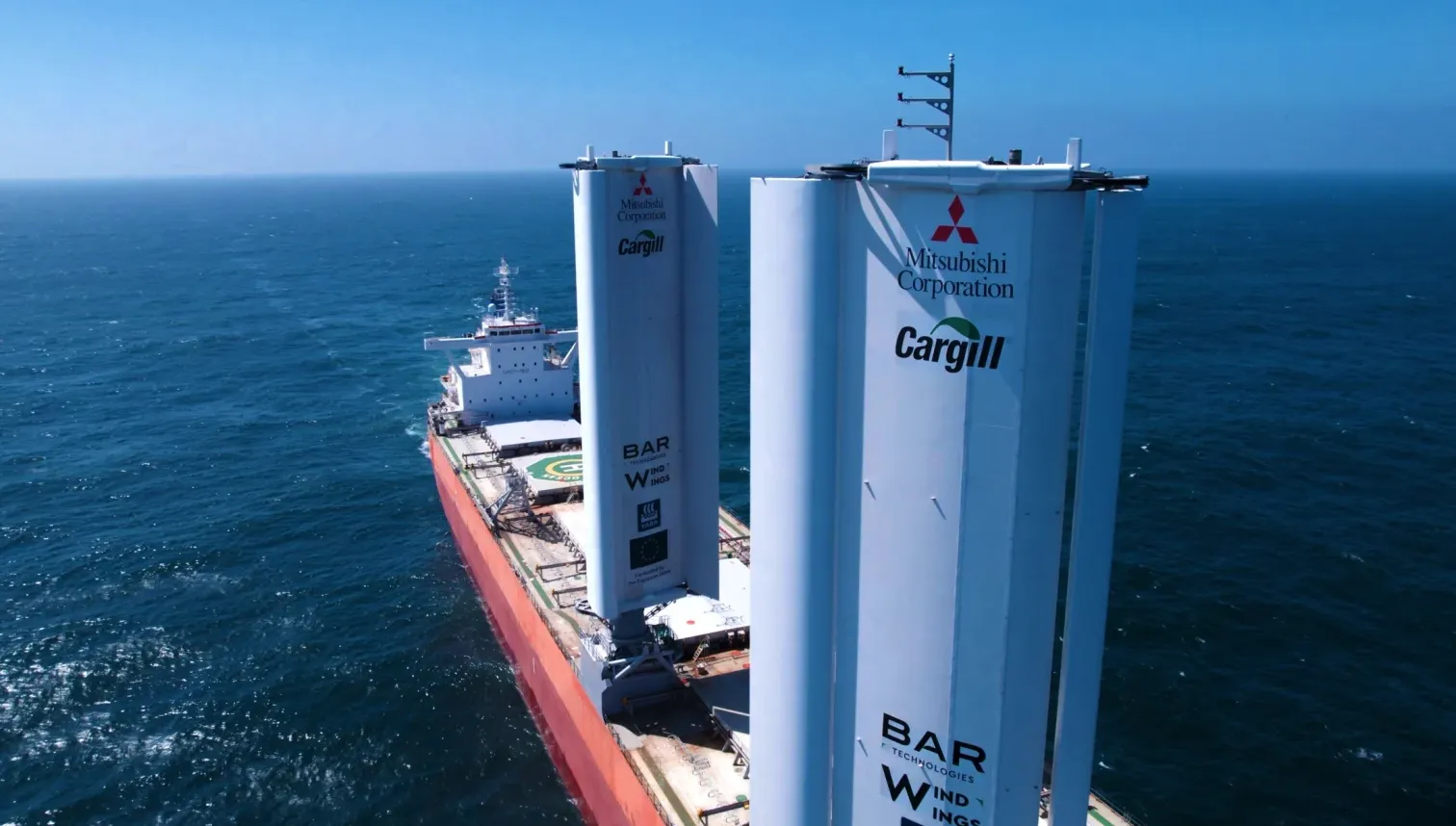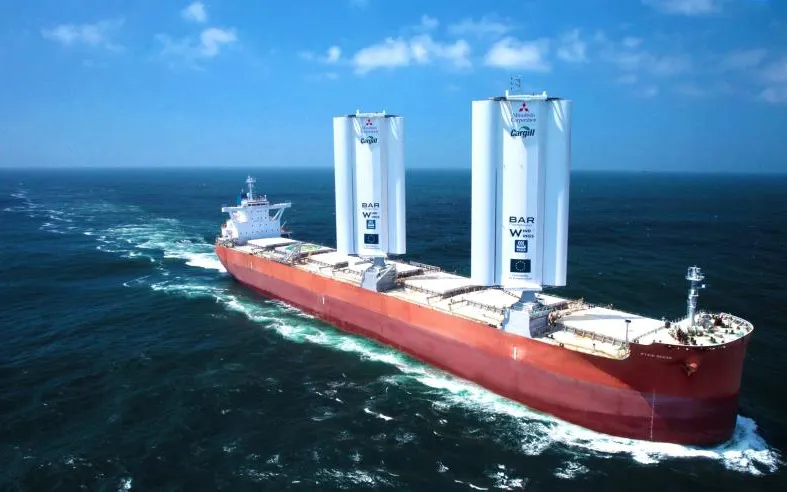Seafaring Trial Aims to Cut Cargo Ship Emissions by 30 Percent
A maiden voyage has commenced for a cargo ship that is fitted with towering rigid sails, equivalent in height to a 10-story building. The Pyxis Ocean vessel aims to evaluate the effectiveness of WindWings sails, which are specifically designed to utilize traditional wind power in order to minimize fuel consumption and decrease CO2 emissions in the shipping industry. The developers of these sails anticipate that this technology could potentially reduce carbon emissions from cargo ships by approximately 30%, aligning with the maritime sector’s objective of achieving net-zero emissions by 2050. Furthermore, if combined with alternative fuels, the estimated reduction in emissions could be even greater.
The ship is retrofitted with two WindWings, both 37.5 meters (123 ft) tall. Rigid sails are made from the same materials as wind turbines and can be attached to the decks of cargo ships, providing an alternative for older ships to reduce environmental impact. The ship’s maiden voyage maps the route from China to Brazil.
The project is a collaboration between BAR Technologies (which developed the sails), Cargill Ocean Transportation, Mitsubishi Corporation and Yara Marine. “The marine industry is an extremely difficult industry to be carbon neutral,” said Cargill President Jan Dieleman. “So you don’t have a lot of tools. That’s why it’s really important that we, as users of the shipping industry, also participate in some innovations and really move the industry forward.

In July, the shipping industry agreed to reduce its greenhouse gas emissions to net zero “by or approximately 2050, i.e. close to 2050”. According to The New York Times, the non-binding agreement is essentially toothless, but is meant to signal to governments what their (binding) goals are compared to. The agreement would have been even looser had it not been for a “strong last-minute push” by small island states and other economically less developed coastal nations, leading to a plan that offers the possibility of limiting global warming to 1.5 degrees Celsius. This is the threshold that climate experts agree the world must avoid in order to save the planet from the worst climate change scenarios.
“We fought tooth and nail for these numbers,” Carlos Fuller, Belize’s representative to the UN, told NYT last month. “They’re not perfect, but they allow us to stay within 1.5 degrees Celsius. And that’s what we came here to do.”
Wind power has the potential to help achieve these goals, but deployment is a challenge. “We’ve seen the number of ships using this technology double in the last 12 months,” Stephen Gordon, chief executive of maritime information firm Clarksons Research, told the BBC. “However, this is from a low base. In the international fleet and new order book of over 110,000 vessels, we currently have a record of less than 100 wind-assisted technologies.




